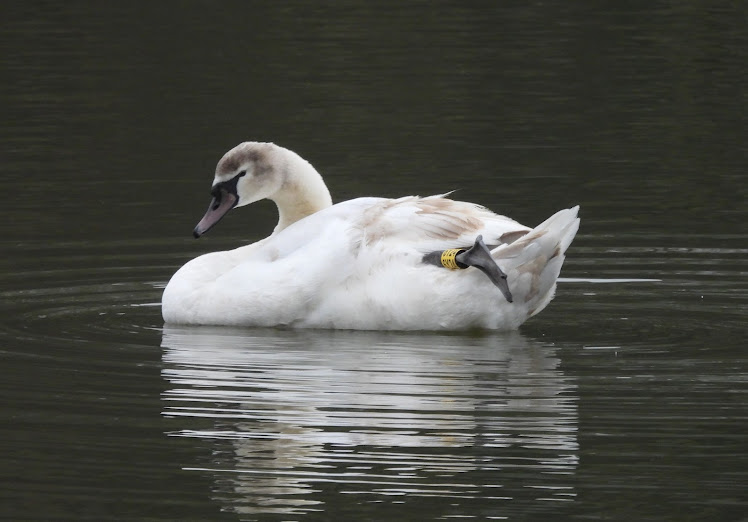I was down at Linacre early on Sunday morning to ring the last two tit boxes of the 2015 season. Both boxes held
Great Tits, with one containing 5 pulli and the other containing 6 pulli. This brings the total pulli ringed this year to 195, which is down on last year. Unfortunately the weather in May wasn't great this year which meant we lost several clutches of eggs and a few young as well. There's one box with an active nest in it, a
Wren's nest, which was still being incubated on Thursday, so I'll go back and check it next week.
At the same time as ringing the chicks I also walked around the reservoirs. It was pretty quiet, but I did spot 2 female
Mandarins with broods of 8 and 5 ducklings, 2 broods of
Coot (2 and 4 respectively), my first Linacre record of 2015, along with 2 active nests, and 2 juvenile
Grey Wagtails (also the first of 2015). There were 25
Mallards, but worryingly, no ducklings. A
Willow Warbler was heard singing, along with several
Chiffchaffs and 4
Swifts.
The field by the top reservoir is left to grow throughout the summer, and on Sunday I noticed several orchids, which I believe are
Early Purple Orchids.
Early Purple Orchid
Boardwalk by the top reservoir with Hawthorn
After walking around the reservoirs I went down to the ringing area where I saw and heard a singing
Whitethroat. I spotted it as flew up from the ground near the net rides, calling and displaying towards me. This behaviour made me think that the bird had just flown up from a nest. I had a quick check, but unfortunately, I couldn't find it. I walked away and within a few minutes the bird flew straight back to the same spot, so I think it's pretty likely there's a nest there. I've recorded
Whitethroats here before, but never nesting, so that's a first for the site- hurrah!! Hopefully, we'll be able to catch the young later in the season when they've fledged.

























